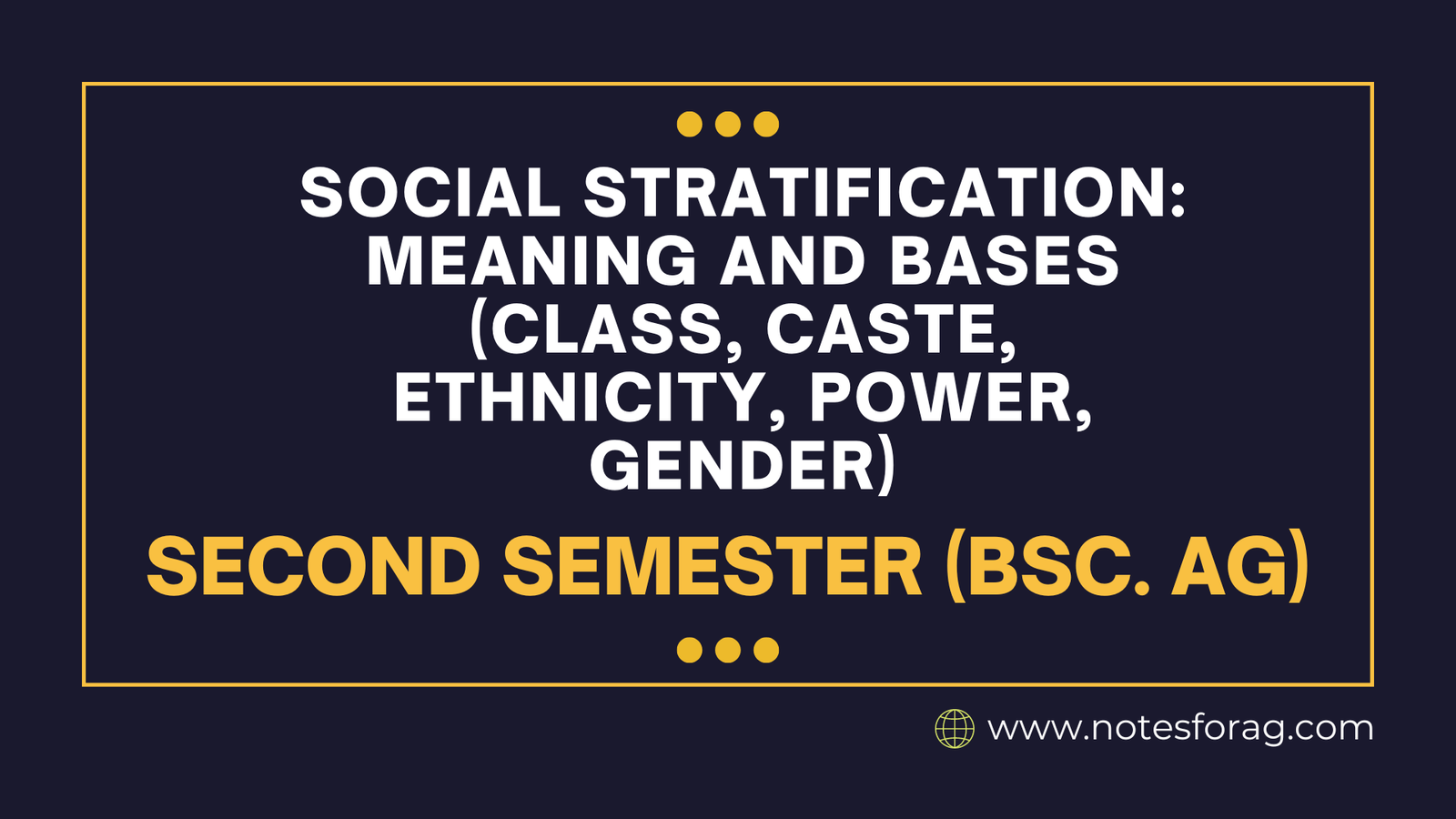In a society, social stratification is the hierarchical organization of people or groups according to characteristics that result in an uneven distribution of opportunities and resources. Social mobility and life prospects are negatively impacted by the systemic inequities it produces. The primary components of social stratification are: class, which is based on economic variables like wealth and occupation; caste, a rigid system based on inherited status; ethnicity, which is based on historical contexts and cultural differences; power, which affects access to resources and authority; and gender, which shapes societal roles and expectations. The interplay between these bases creates intricate patterns of benefit and drawback in societies across the globe.
Table of Contents
Introduction to Social Stratification

Social stratification, which describes the hierarchical organization of people within a society, is a basic concept in sociological studies. This hierarchical structure is determined by a number of factors, such as status, power, and money. To fully appreciate the complexities of social inequality and its far-reaching effects on people and communities, one must have a solid understanding of social stratification.
Social stratification is important because it helps to explain the patterns of inequality that are present in all societies. These patterns, which are methodically arranged rather than randomly, frequently result in different social classes. Typically, these classes are defined by unequal access to opportunities and resources, which can continue generational cycles of privilege and disadvantage.
Bases of Social Stratification

The main bases of social stratification include class, caste, ethnicity, power, and gender.
1. Class
Class stratification is determined by economic variables, including occupation, wealth, income, and education. In contrast to the caste system, it is a more flexible structure that promotes higher social mobility.
Bases:
- Wealth and Income: Variations in earnings and financial holdings.
- Occupation: Type of work, level of job security, and prestige related to different fields of expertise.
- Education: The degree of education attained, which influences income and employment opportunities.
2. Caste
Especially in societies like India, caste stratification is a strict system that is frequently based on inherited status. With minimal room for flexibility, it dictates social status, occupation, and possible marriage partners.
Bases:
- Birth: Social status is mostly predetermined and people are born into a caste.
- Occupation: Historically connected to particular inherited professions.
- Endogamy: The practice of getting married within one’s caste in order to preserve status and chastity.
3. Ethnicity
Language, religion, and customs are examples of perceived cultural differences that serve as the foundation for ethnic stratification. Different social groups within a larger society are frequently the result of it.
Bases:
- Cultural practices: Common languages, customs, and faiths.
- Historical Context: The historical interactions, migration, and colonization of different ethnic groups.
- Discrimination: Pervasive preconceptions and biases that limit people’s access to opportunities and resources.
4. Power
The unequal distribution of authority and power within a society that affects one’s capacity to manage resources and exert influence over others is referred to as power stratification.
Bases:
- Political Authority: Posts in the governing bodies and political associations.
- Social Influence: The capacity to mold social norms and public opinion.
- Economic Control: Possession and command of major economic assets and businesses.
5. Gender
The roles, behaviors, and expectations that society assigns to people based on their sex are the foundation of gender stratification. It frequently leads to men and women having different access to opportunities and resources.
Bases:
- Biological Differences: Roles that are socially constructed according to one’s perceived ability to reproduce and move physically.
- Social Roles: Conduct, employment, and family obligations expected of you.
- Institutional Policies: Rules and procedures that uphold gender norms and disparities.
These social stratification bases frequently interact and overlap, resulting in intricate layers of advantage and disadvantage. For instance, a person’s class status may interact with their gender and ethnicity, creating more complex forms of inequality. In order to solve social injustices and advance social justice, it is essential to comprehend these intersections.
Frequently Asked Question(FAQ)
What is social stratification?
In a society, social stratification is the hierarchical arrangement of people or groups according to a variety of criteria that result in unequal access to opportunities, resources, and privileges.
How do sociologists study social stratification?
Sociologists use both qualitative and quantitative techniques to study social stratification, including case studies and ethnography, as well as quantitative techniques like statistical analysis and surveys. They examine trends in inequality, migration, and the effects of social stratification on people and communities.
Related Articles

